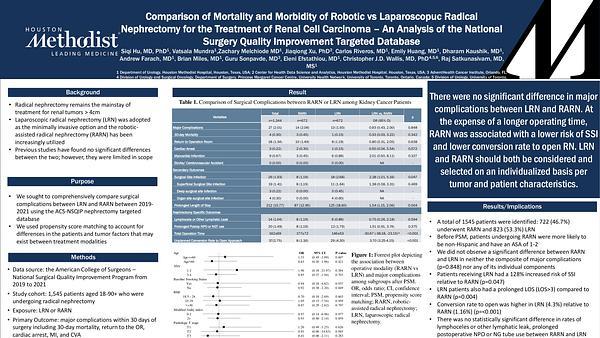Would you like to see your presentation here, made available to a global audience of researchers?
Add your own presentation or have us affordably record your next conference.
Next from AMA Research Challenge 2024

poster
Comparison of Mortality and Morbidity of Robotic vs Laparoscopuc Radical Nephrectomy for the Treatment of Renal Cell Carcinoma – An Analysis of the National Surgery Quality Improvement Targeted Database
AMA Research Challenge 2024
VM
Vatsala Mundra
07 November 2024